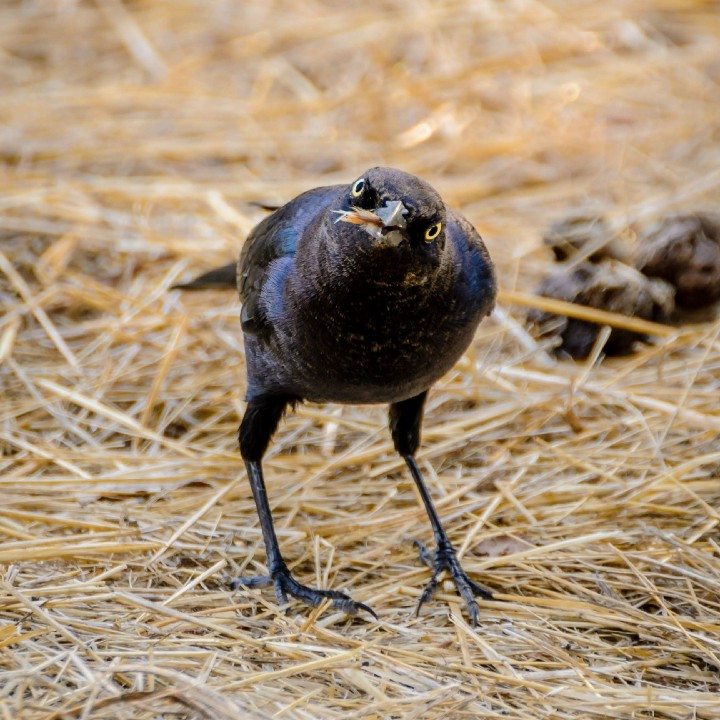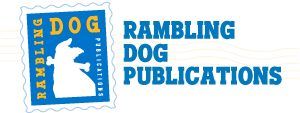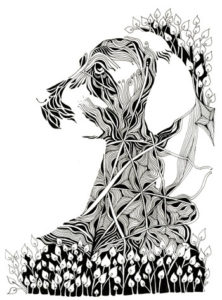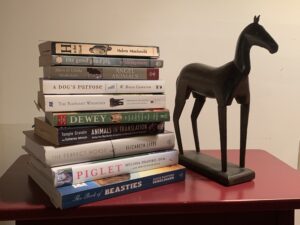
How the Dog Got the Last Word
The gentleman set down an intricately patterned carry bag and proceeded to eat his lunch.
Eating my own meal at the other end of the banquette, I noticed how carefully the weaver had planned the pattern and chosen the colors. The fine fibers, dyed in earth tones, were beaten evenly into rows around close-space warp threads. The fabric was tight and its lines were true.
Having tried my hand at weaving, I was impressed by its quality and appreciated the time invested in its creation.
“What a beautiful bag,” I exclaimed before thinking that perhaps this bearded stranger might not welcome an interruption of his meal.
He responded graciously. He said it was one of several bags that he commissioned from local weavers when he worked in Africa. The weft I admired came from Baobab leaves. “They wove my initials into this one,” he said, holding it up. Then he laughed and turned it around. “But they got them backward on the other side!”
“Where did you work in Africa?” I asked him.
He was a geologist, he said, traveling with a crew of archeologists working with Richard Leakey as they explored for signs of early human inhabitants in Kenya.
As a geologist, it was his job to date the terrestrial layers where a discovery was made, thereby dating the bones or objects.
“Wow! What an amazing job!” I said. “What was it like?”
The group moved around, he said, establishing new camps as they searched for artifacts. “One of the interesting things about the Leakeys,” the geologist recalled, “was that they always built a birdbath at every new location.”
They enjoyed watching the feathered fauna that came to drink and bathe.
When the cooks baked the daily bread each morning, they scattered crumbs and crusts around this avian oasis for the birds to enjoy eating while the people enjoyed watching the birds.
He recalled a particular incident that happened in one of those camps.
A large, noisy flock of fan-tailed ravens arrived for breakfast. The camp dog couldn’t resist an opportunity for a bit of mayhem. He rushed them, barking wildly, and they exploded into the air.
My storyteller watched with amazement as the airborne birds regrouped. They circled into tight formation and turned back toward the camp. As a unit, they dive-bombed the dog and drove him off their water hole.
The dog made tracks in a hurry. But only momentarily.
Before the birds could return for their breakfast, he peed on the bread.
The dog got the last word.
We had a good laugh together about this interspecies interaction.
We wondered, what were the animals thinking?
We agreed that the birds and the dog were thinking and planning. And we decided that people who don’t believe that animals have intelligence might change their mindset if they paid closer attention to the natural world.
Wasn’t planning evident in the birds’ regrouping to defend and reclaim their breakfast? Wasn’t the dog retaliating for his humiliation in a very doggy way?
“I write about animals,” I said. “Would you mind if I shared your story with fellow animal lovers?”
“Not at all,” he replied.”
We finished our lunches and went our ways. But no longer as strangers.
Everyone has stories to tell. If this little animal anecdote brightened your day, send a mental ‘thank you’ to Thure for allowing me to share his story with you.
One good karmic act deserves another.

 Next Post
Next Post

